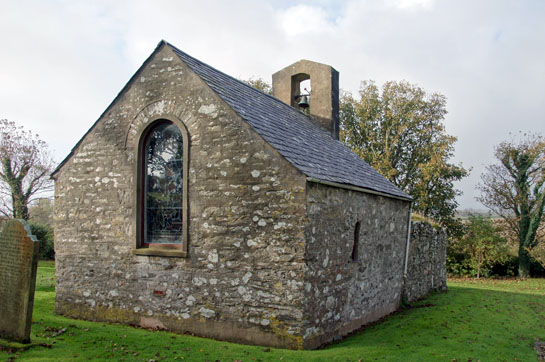|
Alphabetical List |
|
|
|
|
|
|
|
County List and Topics |
|
|
|
Please sign my Guestbook and leave feedback |
|
|
||||||||||||||||||||||
|
we would now call a “congregation”. The cross itself would have been the rallying point and focus of worshippers. Kirk Lonan, as with many Manx churches, is in a quite remote spot. As you negotiate the narrow lanes leading from the main Douglas-Laxey Road you might wonder what it was doing here in the first place. The Church Guide records, however, that the site would have been on the ancient packhorse road from Douglas to the North of the island and was blessed with a well and also with proximity to two landing beaches. Moreover it would almost certainly have been a spiritual site since pagan times. Today’s church is in two parts. To the west are the derelict and roofless remains of a twelfth century keeil. The site was gifted to the monks of St Bees on the Cumbrian coast and it was they who constructed it over the remains of a seventh century keeil. It is mainly of local field stone but the sandstone lintels are believed to have been brought from Cumbria. There were north and south doors although the northern one has been filled in. To the east is the “modern” church which is even smaller than the western keeil. It is hard to know how old this structure is. The deep splay of the north window suggests no later than the thirteenth century but it is dangerous to attribute English church-building practices to this island that would have been remote from the stirrings of Gothic architecture on the mainland. We only know that we are lucky to have it at all. In 1733 the parishioners petitioned for the building of a less remote church. It was not built until 1833 but a condition was that Kirk Lonan was levelled. Churches truly move in mysterious ways their wonders to perform, don’t they? Anyway, the church was not destroyed but was allowed to crumble before the Rev John Quine of the new church decided to restore it. Within the grounds of the church is a small shelter, open on one side, within which are housed Lonan’s collection of crosses and carved slabs. |
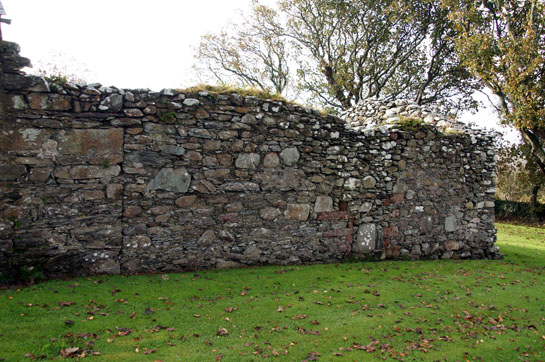 |
||||||||||||||||||||||
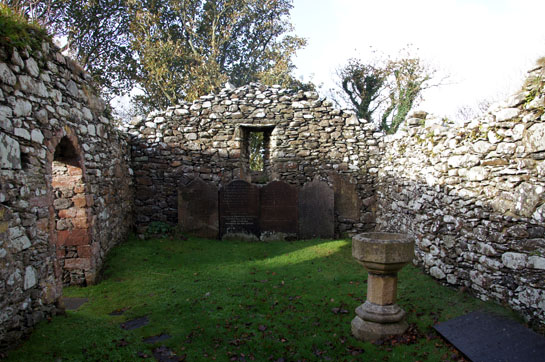 |
||||||||||||||||||||||
 |
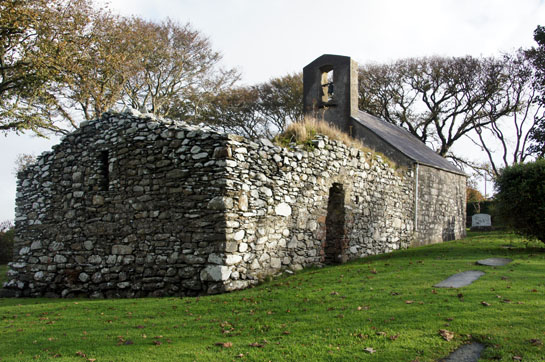 |
|||||||||||||||||||||
|
The twelfth century keeil. The remains of the north door (top left) can just be discerned. The doors and windows are not round-headed as we might have expected in England at this time. The monks of St Bees, however, came from a place where quarries would have been plentiful and would not have had experience of using field stone. So we might speculate that they had to improvise. The west window (top right) is rectangular. From the pattern of the masonry it seems possible that it replaced a larger window. There are (recent) gravestones sited within its precincts. The inside of the south door (lower left) shows that its outline was built of sandstone blocks. We can see (lower right) that the keeil was larger than the building which is now used. |
||||||||||||||||||||||
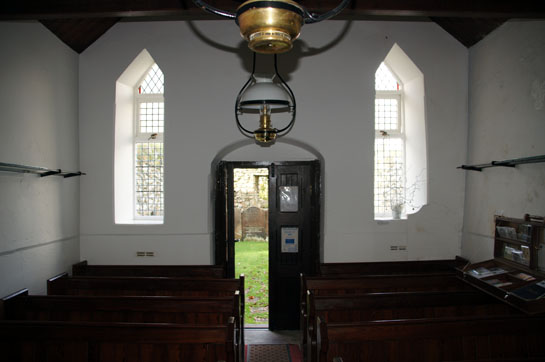 |
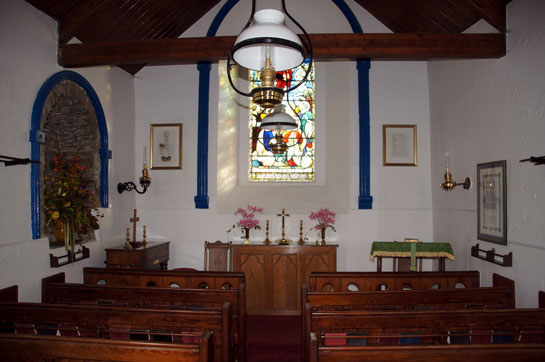 |
|||||||||||||||||||||
|
Left: The west end of the active church. Right: The east end. The tiny proportions and, indeed, the unpretentious furnishings and tiny altar give the church more the feel of a nonconformist chapel. This, however, is a living church. Remarkably for such a cramped building there is a little side altar to the left of the main one! |
||||||||||||||||||||||
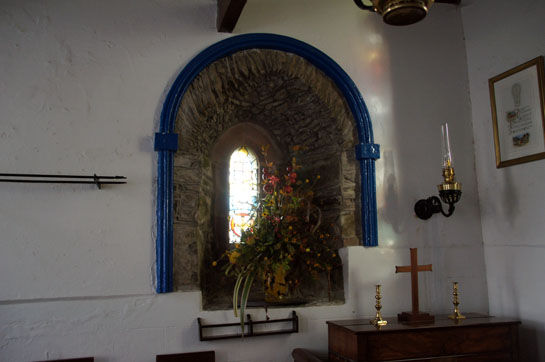 |
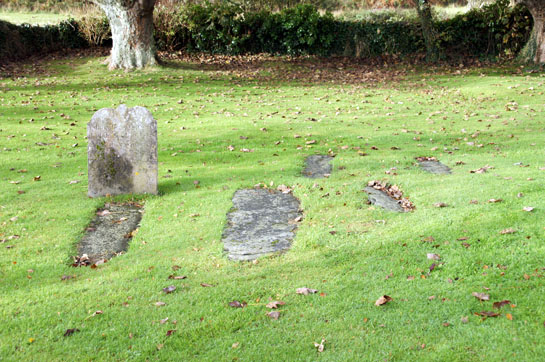 |
|||||||||||||||||||||
|
Left: The deeply-splayed north window has obviously been restored but it nevertheless bears all the signs of being quite ancient. Right: The churchyard has these ancient flat gravestones. |
||||||||||||||||||||||
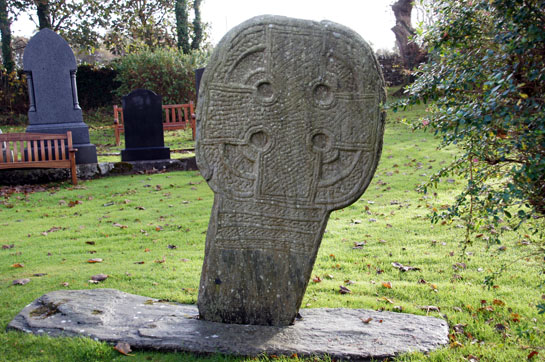 |
||||||||||||||||||||||
 |
||||||||||||||||||||||
|
If you are a student of first millennium history then the Lonan Cross is worth the price of the ferry journey on its own. Unlike most other crosses, certainly on the mainland but also on the island, it is a squat structure and the decoration does not continue to ground level. That it remains in-situ and without substantial damage after sixteen hundred years is quite remarkable. |
||||||||||||||||||||||
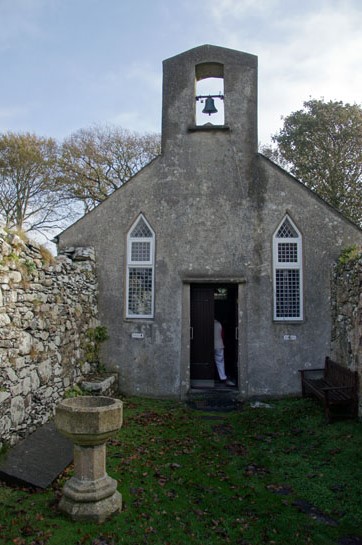 |
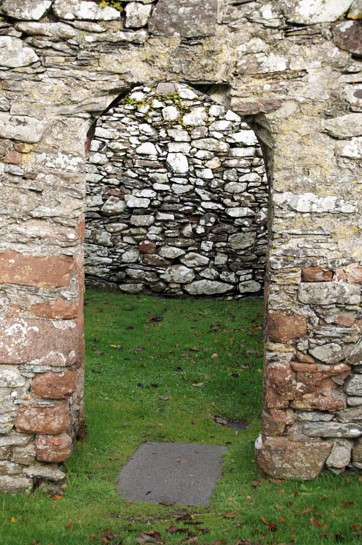 |
|||||||||||||||||||||
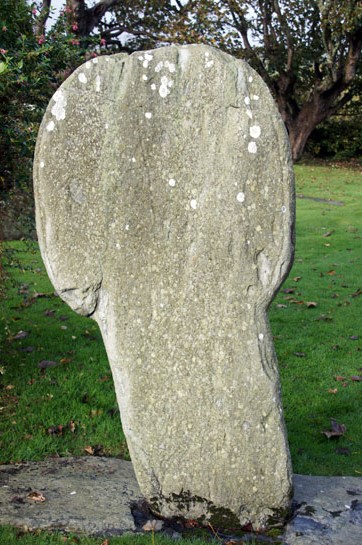 |
||||||||||||||||||||||
|
Left: The reverse side of the cross is quite plain. Everything about the Lonan Cross informs you that it was a practical device, not some decorative frippery. The fifth century monk needed a focal point for his devotions and could not afford the luxury of carving on every surface. Nor did he need the lofty, finely proportioned crosses that emerged a couple of hundred years later on the mainland. His faith would have been simple and uncluttered by the doctrinal complexities so beloved of the early Christian Fathers. His cross was as robust and uncomplicated as his faith. I have already mentioned that this cross was planted only thirty years after the Romans left England. Here’s another chronological perspective: it predates the arrival of St Augustine to “convert” Kent by 150 years. Centre: The west end of the new church as seen from the keeil. Right: The round-ish south doorway of the keeil. |
||||||||||||||||||||||
 |
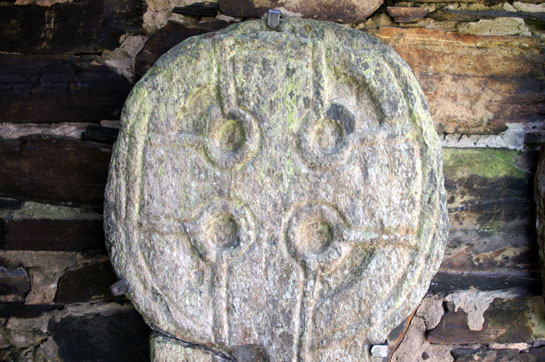 |
|||||||||||||||||||||
|
Left: The shelter for the rest of Lonan’s collection of crosses and slabs. Right: A wheel cross head similar to the churchyard cross but conspicuously cruder and less decorated. |
||||||||||||||||||||||
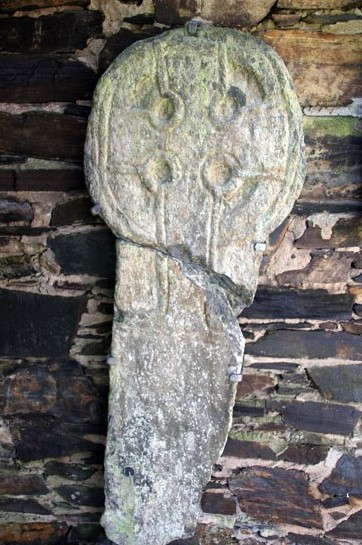 |
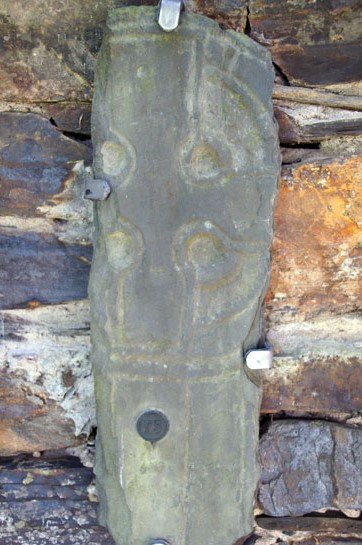 |
|||||||||||||||||||||
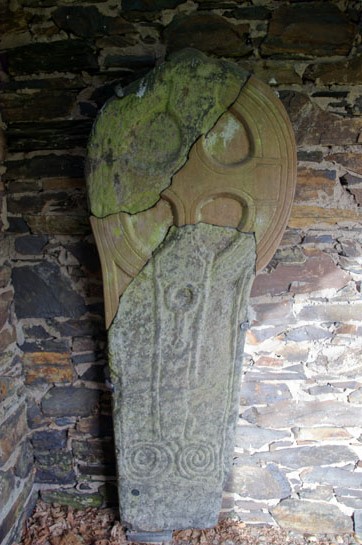 |
||||||||||||||||||||||
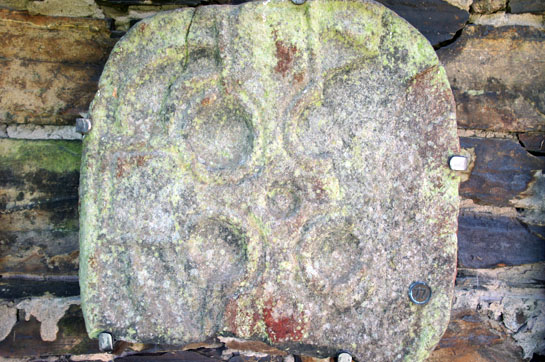 |
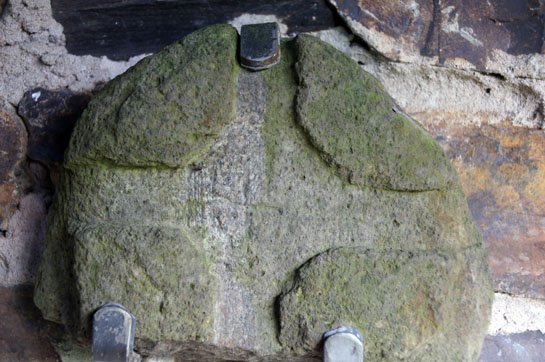 |
|||||||||||||||||||||
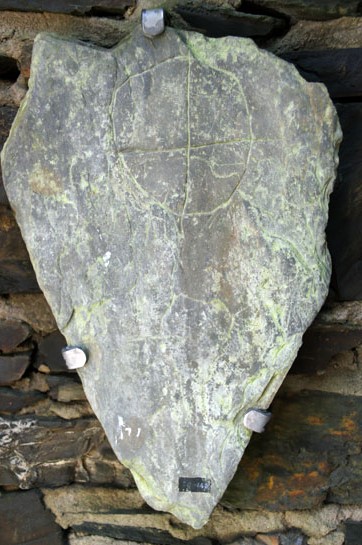 |
 |
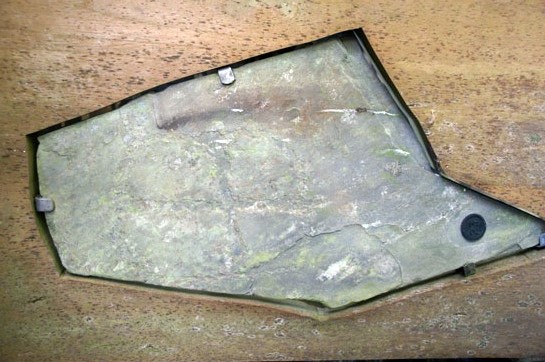 |
||||||||||||||||||||
|
This set of photographs shows the majority of the cross and slab fragments preserved within the churchyard. It is, it must be said, perhaps the least interesting collection of such crosses visually. All are of the Celtic era, so they are very simple and lack the pagan exuberance of the Viking-influenced work elsewhere on the island. Nevertheless, they are also probably amongst the oldest and there is a fascination on seeing a collection of the very earliest representations of the cross design in these islands. The wheel cross is the most sophisticated design and it is interesting to contrast it with the simplest imagery represented in the bottom row above. Only the cross top left has any sign of adornment and it is interesting to the see the spiral design upon it - one of the most ubiquitous motifs in spiritual iconography and almost as old as time itself. |
||||||||||||||||||||||
|
Footnote on the Cataloguing of the Crosses Each of the Manx crosses has a metal disc with a number. This is a reference number allocated by the (splendid) Manx Museum in Douglas. The authority on the Manx crosses was PMC Kermode (1855-1932) who published the definitive description of the crosses in 1887 with a revised edition in 1907. You would be hard-pressed to find a copy of either edition and if you were so fortunate you would find it an expensive acquisition! Kermode gave a reference number to each cross but during his tenure as the original curator of the Manx Museum he revised them to the numbers that you see now. Unfortunately this means that even if you find an electronic facsimile of his book you will find that the numbers in the book bear no resemblance to the numbers on the crosses! Nor, as far as I can see, has the Manx Museum published a cross-reference online which is a bit of a shame considering the great job it does in preserving and explaining the island’s history. A new edition was published in 1994 and this presumably refers to the new numbers but, frustratingly, this seems now only to be available in the USA. You couldn’t make it up, could you? The Manx Museum publishes a super little book called “The Art of the Manx Crosses” at the extraordinary bargain price of óG2! It has forty pages and is profusely illustrated with b/w photographs. If you visit the island it is indispensable but it shows only the highlights of the collection. The churches that play host to the crosses provide information that varies from the excellent (Kirk Michael, Onchan) to the distinctly patchy. To be fair, however, there is little definitive information on the majority of crosses, especially for the very plain ones such as at Kirk Lonan,, because it is the decorations, figures and runes that embellish the later crosses that have enabled antiquarians to date and explain them. |
||||||||||||||||||||||
